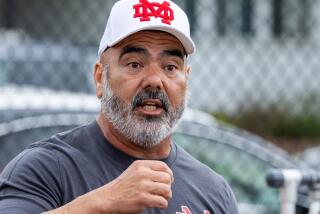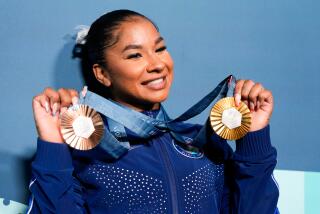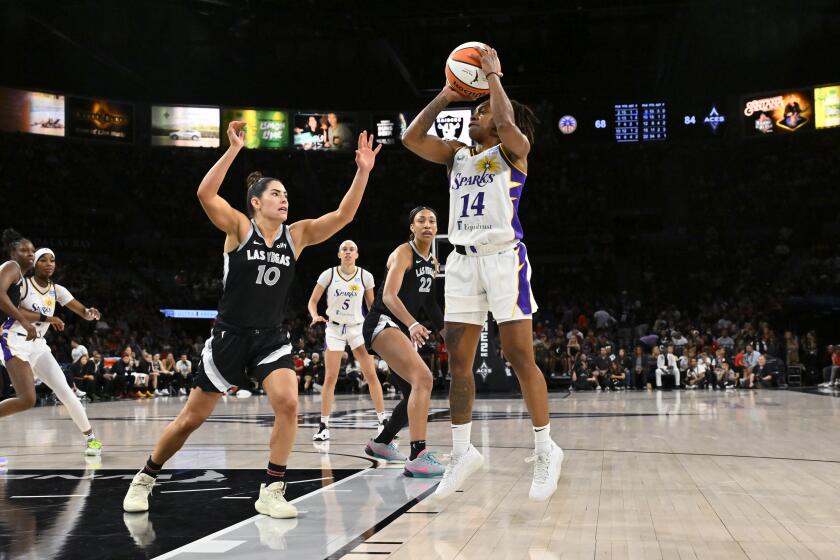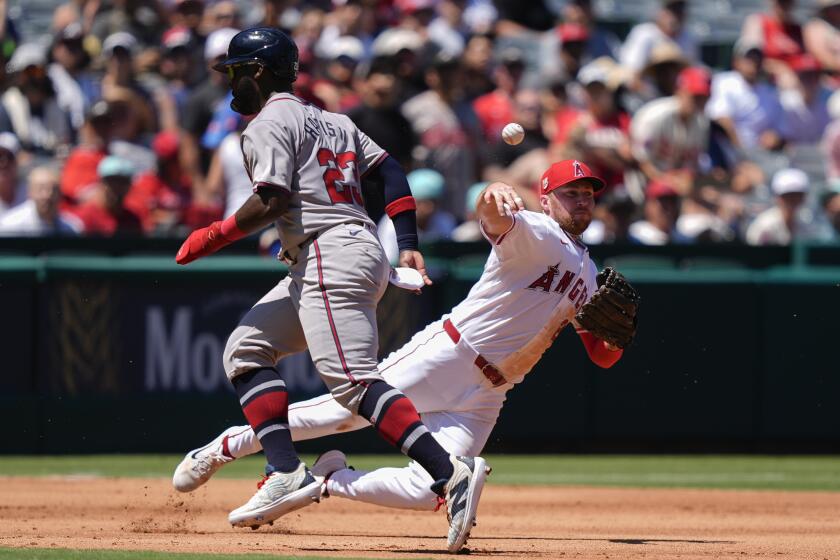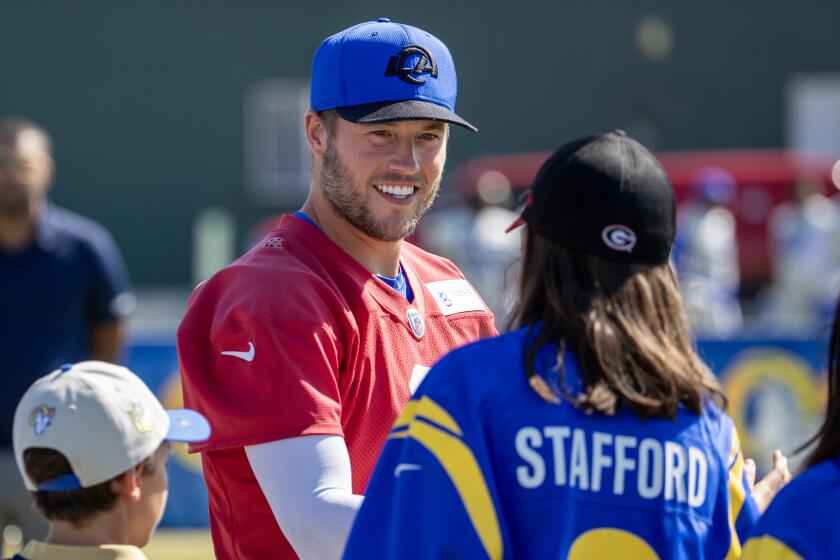Fred Gehrke, 83; Ram Player, Artist
Fred Gehrke, a former Ram halfback who was inducted into the Pro Football Hall of Fame--not for how he carried the ball but for painting horns on his team’s leather helmets, touching off a colorful and enduring quest for logos in pro sports--has died. He was 83.
Gehrke, who later served as general manager of the Denver Broncos, died Saturday at his home in Palm Springs of unspecified causes.
For the record:
12:00 a.m. Feb. 18, 2002 FOR THE RECORD
Los Angeles Times Monday February 18, 2002 Home Edition Main News Part A Page 2 A2 Desk 2 inches; 36 words Type of Material: Correction
Obituary--An obituary in Thursday’s Times incorrectly stated the number of offspring for football player and executive Fred Gehrke, who started the trend toward decorated helmets. He had four daughters, a son, 12 grandchildren and 13 great grandchildren.
“They forget I played. I played 10 years.... I was All-Pro in 1945, but it’s those helmets that got me into the Hall of Fame,” Gehrke told the Riverside Press-Enterprise in 1994, when the peripatetic Rams were deciding to give up half a century in Southern California and move to St. Louis.
Gehrke, one of the first art majors to play in the National Football League, received the Hall of Fame’s first Daniel F. Reeves Pioneer Award in Canton, Ohio, in 1972. That was apt, because it was the pioneering Reeves, owner of the Rams at the time, who enthusiastically approved Gehrke’s innovative idea.
The first owner to move an NFL team west of the Rockies (1946), the first to hire African Americans (1946) and the first to televise games (1951), Reeves was always eager to improve his team’s appearance.
“That got me thinking about the helmet,” Gehrke told The Times in 1972 at his Hall of Fame induction. “I made a pen-and-ink sketch of a ram’s horns one day in 1947 and showed it to our new coach, Bob Snyder. He said he couldn’t visualize it on the headgear and told me to go home and paint it on a helmet.
“So I took one of those gosh-awful brown leather helmets and painted it blue, then made a free rendering of a ram’s horns in gold. It’s the same thing they have today, except the gold is now white, due to television. The blue-and-gold helmet was much prettier.”
Reeves took one look and said, “That’s it! Do it.” Snyder told Gehrke to paint 75, and the halfback completed one a night over the summer at his Inglewood home, lining them up on his garage floor. He tried to use a cardboard template he had fashioned, but, because of the differing helmet sizes, had to paint virtually all of them freehand.
Gehrke was paid $1 per helmet, which covered only the cost of the paint, he said. He provided the labor for free, and for the next two years carried cans of blue and gold paint with him to touch up helmets after each game.
By 1949, the Riddell sporting goods company had created a plastic helmet, baking in Gehrke’s design. Some observers said the only way to tell the Rams and the Cleveland Browns apart in the primitive initial coast-to-coast telecast of an NFL championship by the Dumont network two years later was the distinctive horns on the Rams’ helmets.
The logo idea quickly caught on and, over the next decade, most other NFL teams, beginning with the Colts (then of Baltimore, now Indianapolis), adopted their own designer helmets; college and prep teams followed. Only the Browns retained plain headgear.
In fact, it was in Cleveland that Gehrke joined the Rams in 1940.
A native of Salt Lake City, Gehrke excelled in sports--football, diving and javelin tossing--as well as art. When World War II intervened, he was assigned to be an aircraft technical illustrator at Northrop in Southern California. To keep in shape, he played with the Los Angeles Bulldogs and other minor league football teams.
He rejoined the Cleveland Rams at war’s end and helped lead the team to the NFL championship Dec. 16, 1945. “Gerk” moved west with the team and remained with the L.A. Rams until 1950, the last two years as a player-coach.
Snyder told The Times in 1947 that he considered Gehrke “the finest left halfback in the National Football League.” At 5 feet 11 and 190 pounds, Gehrke averaged almost 5 yards per carry throughout his career, rushed for 1,664 yards and 15 touchdowns and had 56 catches for 529 yards and seven scores.
He later worked as a pro football scout and joined the Broncos in 1965 as director of player personnel. He became assistant general manager in 1973 and general manager in 1976. He was largely considered the architect of the Broncos’ rise in the NFL, but was fired in 1981, when Edgar F. Kaiser Jr. bought the team.
Gehrke then spent two years working with the Denver Gold of the United States Football League and remained in Colorado until 1999, when he sold all his sports collectibles at auction and moved to Palm Springs with his wife, Jean.
In addition to her, Gehrke is survived by a son and two daughters.
More to Read
Go beyond the scoreboard
Get the latest on L.A.'s teams in the daily Sports Report newsletter.
You may occasionally receive promotional content from the Los Angeles Times.
